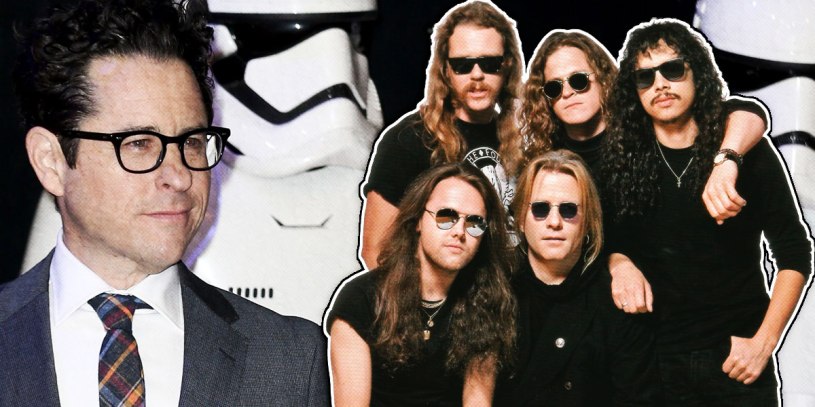This is the 37th post in a daily series. Read about it here and see the list of previous posts here. A new post about “Star Wars” will be posted every day for 40 days leading up to the franchise’s 40th birthday on May 25th.
As a director and producer, J.J. Abrams has proven he can take existing franchises and push them into new directions while giving fans exactly what they want. In 2006, his “Mission: Impossible III” was critically beloved while being one of the biggest blockbusters of the year. He has stayed with the series as a producer, bringing on huge names to help expand the scope of the series. In 2009, he directed “Star Trek,” arguably the best movie in the franchise in two decades. And in 2015, he directed the first “Star Wars” film since George Lucas’s deal with Disney. Taking in more than $2 billion worldwide, the film satisfied favs who had felt betrayed by Lucas’s prequels.
In the space of a decade, J.J. Abrams reenergized three huge movie franchises, showing he could connect to the heart and soul of a series, regardless of genre.
From a certain point of view, Abrams became to movies what Bob Rock had been to the music industry in the ’80s and ’90s.
Bear with me.
Rock was responsible for helping several artists adopt a slicker, more polished sound. Bon Jovi’s “Slippery When Wet,” Motley Crüe’s “Dr. Feelgood,” and The Cult’s “Sonic Temple” are all examples of handiwork. In each case, Rock took existing, known quantities, and distilled each band’s sound to its essence, and then amplified the shit out of that sound in a way that was commercially successful. And then he used that skill to make one of the most popular metal albums of all time.
It was Rock who worked with Metallica to create the band’s self-titled fifth album, known as “the black album.” That album, which included the signature “Enter Sandman,” stayed on the charts for more than five years, spawning singles, videos, and a massive tour.
Metallica, The Cult, Motley Crüe, and Bon Jovi were all known quantities before Rock, but he made the bands palatable to a wider audience while retaining what he perceived to be the core parts of each band’s identity. And that’s what Abrams did with the “Mission: Impossible,” “Star Trek,” and “Star Wars” franchises.
None of those movie series had a recognition problem. “Star Wars” was the biggest movie franchise long before Disney acquired it. But it took someone outside the franchise to reinvigorate it, making it fresh while returning it to what fans had loved about it. And in doing so, he made a “Star Wars” film that was loved by longtime fans and appreciated by people who had written off the franchise. “The Force Awakens” was guaranteed to make lots of money by virtue of being a “Star Wars” movie, but it wasn’t guaranteed to be one of highest-grossing movies of all time. Abrams deserves some credit for being able to draw in new fans.
“The Force Awakens” and the black album are huge successes, despite the metric. They are among the most commercially lucrative releases of their kind, whether you’re comparing them to other “Star Wars” movies and Metallica albums, or to all movies and all albums, respectively.
But in both cases, not all fans were pleased. Metallica fans petitioned for Rock to be fired. Many “Star Wars” fans criticized “The Force Awakens” for being too derivative of the previous movies, particularly “A New Hope.” To be sure, they tell similar stories. Both films feature a malevolent Force user who sends teams of Stormtroopers to a sandy planet to find a droid with sensitive information. On said planet, the search for the droid forces an earnest, plucky orphan to leave home. The plucky orphan meets an older mentor who takes the orphan to a weird bar. The orphan and mentor help a crew of good guys defeat the malevolent Force user’s planet-destroying weapon. But in the process, a planet is destroyed and the malevolent villain kills said mentor.
So, yeah. There are a lot of undeniable similarities between the plots. But let’s not pretend that this is the first time a “Star Wars” film revisited the idea of destroying planets. It’s as much of a go-to for the franchise as polka covers are for Weird Al or Cancer Man faking his death is for “The X-Files.” The second time seems uninspired, but by the 37th time, it’s familiar tradition.
Abrams figured out what worked best about the “Star Wars” movies and then gave us a lot of that. Nostalgia for the past. A pronounced battle between good and evil. Dazzling dogfights in space. Exotic aliens. Cute robots. Those are essential to “Star Wars” as crunchy guitar solos and pounding drums are to Metallica. It takes an outsider with a keen eye — like Abrams and Rock, respectively — to recognize this and steer a project toward its strengths.
But that doesn’t mean Abrams or Rock didn’t try new things or introduce new things into the canon. Abrams made the daring move of killing off Han Solo, which Lucas had objected to 30 years earlier. Under Rock, Metallica added elements of blues and other genres. Some of their biggest hits from the Rock-produced albums were ballads and other slower songs.
In that regard, Abrams and Rock were different. Abrams reinvented “Star Wars” by going back to its roots, whereas Rock planted new ones. In hindsight, the band’s tenure with Rock is viewed as having mixed results, but that isn’t necessarily Rock’s fault. Abrams got to work with R2-D2, C-3PO, and Chewbacca. Rock wasn’t as lucky. It’s probably more enjoyable to work with cute robots and aliens dedicated to saving the galaxy than it would be to work with Lars Ulrich and James Hetfield.
Sign up for the weekly newsletter here.
Follow us on Twitter and Facebook.

